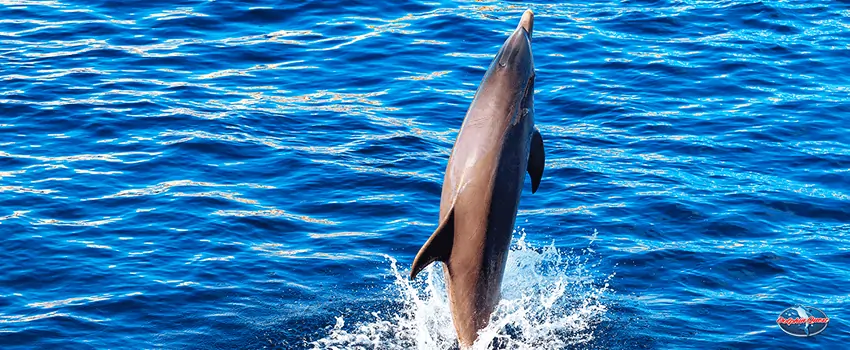Recreational vices of humans are not just for humans. Dolphins also enjoy them!
A BBC video of dolphin behavior in their habitat shows dolphins getting high on puffer fish.
A number of them were seen playing with the puffer. They seemed to love to pass it around with other dolphins every 20 to 30 minutes and were careful not to tear it apart.
To enter a “trance-like” state, dolphins use puffer fish poison. The “Daily News” reported that dolphins were seen floating under the surface of the water, apparently captivated by their reflections, which can be deemed as an adorable specter to witness.
It was thought that high levels of pufferfish toxin could cause death, but dolphins seem to find the right amount to give off a narcotic-like effect.
Dolphins Getting High on Pufferfish
Rob Pilley, a zoologist and series co-producer, described in the “Sunday Times” how young dolphins “purposely” experimented with puffer fish poison.
After chewing the puffer and passing it around, he said that they began to act most unusually. They looked at the surface with fascination as if they were captivated by their reflections.
Filmmakers created underwater spy cameras concealed in fake fish, turtles, and other dolphins. The spy creatures were created to look into dolphin behavior. They wanted to capture their natural behavior through the spy creatures.
Pilley described such dolphin behavior as a first-time observation. He said that the dolphins were so gentle with the pufferfish, as if trying to avoid disturbing it.
He said, “As a consequence, the fish released several toxins as a defense.” Pilley was certain that the behavior was not isolated, as it seemed like the dolphins were well-acquainted with how to handle pufferfish toxin.
Pufferfish Toxin
According to biologists, pufferfish (also known as blowfish) developed its “inflatability” due to its slow and clumsy swimming style, making it vulnerable to predators. To escape predators, pufferfish resort to its elastic stomachs and ability to rapidly ingest large amounts of water (and air) to make itself nearly inedible. Some pufferfish species have spikes on their skin to make them less appealing.
Predators who catch a puffer before it fills up won’t be happy for long. Most pufferfish are contaminated with tetrodotoxin, a poison that can make a pufferfish have an unpleasant taste and cause fatality. Tetrodotoxin can be deadly to humans and is up to 1200 times more dangerous than cyanide. Pufferfish toxin is lethal enough to kill 30 adults, and there is currently no antidote. So observing dolphins getting high on pufferfish is one scientific wonder.
Dolphin Play Habits as Observed
Dolphins are curious creatures and love playing with objects and other dolphins. They can leap up to 4.9 meters above the water, and they can either land on their backs or lay down with their belly. They will often follow the bow and stern of boats.
Many dolphins enjoy chasing one another and using objects to pass their attention. They love to make bubbles and take the time to recreate themselves in the water. Sometimes, other dolphins and animals may participate in this playful behavior. These include the pilot whales, humback whales, Pantropical-spotted dolphins, and Risso dolphins.
Other games are just for fun for them. They’ve been seen catching birds, submerging them several meters below the surface, and then eating them.
Dolphins’ habitat is not without danger. Dolphins will quickly react to anything that is found near their pod. They will exhale, strike the water with their tails, and then group very closely together. Any external disturbance can lead to stress, injuries, irregular migrations, and reduced reproductive success.
To keep an eye on the surrounding environment, males swim within their pod’s territory to communicate with others about any dangers and warn them if they are in danger. Most dolphins avoid sharks or flee when they are near them, but there have been cases where these cetaceans have killed and attacked sharks.
The socialization of dolphins can be seen in their constant association with other dolphins from the same species and sometimes interactions with other species of cetaceans or animals.
People recognize dolphins for their awesome personalities and charm. They are friendly with people and are docile. They build strong social ties and help injured dolphins. They also cooperate to survive and feed themselves. Although unconfirmed, there are stories of dolphins giving fish to humans, sometimes offering them squid, octopus, or fish as gifts. Dolphins getting high on pufferfish can be deemed as a glimpse of their very playful and adorable nature.
Sunshine Scenic Tours Takes You on a Dolphin Cruise
Sunshine Scenic Tours lets you watch the dolphins play and swim in their habitat. Hop on the dolphin cruise in John’s Pass and witness the lovable creatures showcase their playful nature through flips and turns. Book a cruise with us now!











